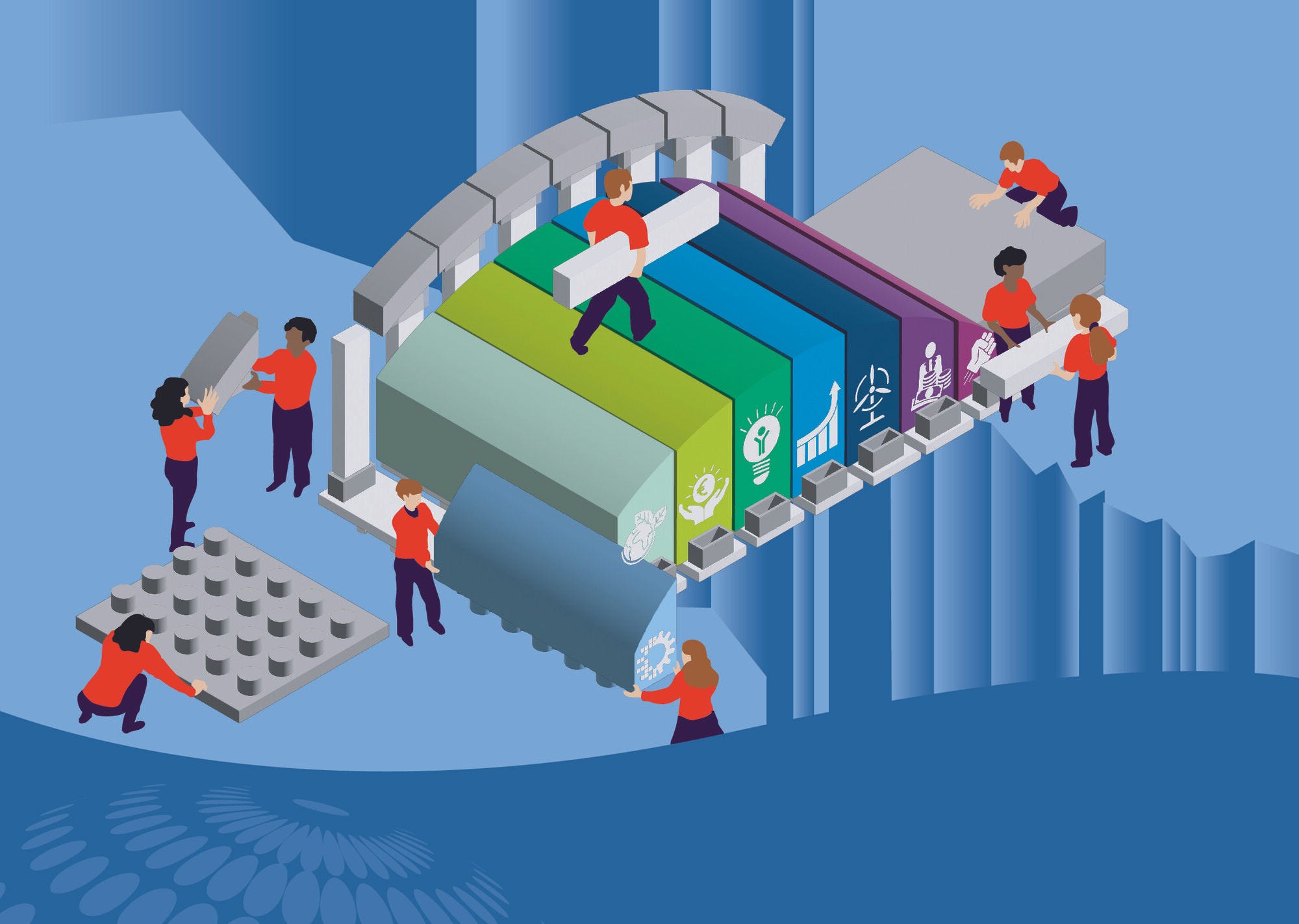Paraguay has faced multiple shocks in the past five years as the COVID-19 pandemic was bookended by severe droughts that affected two key sectors, electricity production and agricultural production. The economy has demonstrated remarkable resilience during this period, supported by policy measures commensurate with the magnitude of the challenge, like the USD 2 billion fiscal response to the pandemic. These shocks have also exposed key underlying vulnerabilities in the country’s economy and development model, including reliance on agricultural exports, informality, limited revenue-raising capacity, and exposure to the consequences of climate change. The response and stimulus recognised these issues and found new ways to address or circumvent them, albeit in many cases not efficiently or permanently. This report draws lessons from policy measures implemented during the pandemic and recovery phase and applies them to current strategic challenges. In doing so, it highlights policy priorities to make Paraguay’s development path more inclusive, stronger and more resilient.
A Multi-dimensional Approach to the Post-COVID-19 World for Paraguay

Abstract
Executive Summary
Paraguay has faced multiple shocks in the past five years and has responded in an effort to keep development on track. The impact of the COVID-19 pandemic on the population was comparable to that of other countries in the region, with 19 289 fatalities and long lockdown periods and school closures. The economy weathered the crisis with the lowest contraction in Latin America and the Caribbean (0.8% of GDP). However, the pandemic was bookended by severe droughts which affected electricity production and the agricultural sector, leading to a contraction of 0.4% of GDP in 2019 and growth of 0.1% in 2022, as well as to temporary imbalances in the current account. Increasing food prices and heightened volatility in the markets for soft commodities following Russia’s war of aggression on Ukraine have also created an uncertain external environment for development policy in the country.
These shocks have revealed underlying vulnerabilities in Paraguay’s economy and development model. The prevalence of informality, which concerns 63% of employment, limits the reach of social protection instruments and the revenue-raising capacity of the state. Relatively weak labour market policies have only a limited ability to function as automatic stabilisers or to facilitate labour market adjustment. The reliance on agricultural exports exposes the economy to large swings in global markets and magnifies the impact of variability in agricultural output. Moreover, lack of access to the sea makes the economy sensitive to changes in transport costs. Finally, Paraguay is particularly vulnerable to climate change resulting from the combination of relatively high exposure to increased temperatures and extreme climate events and high sensitivity given the importance of agriculture in the economy and waterways for electricity production and international transport.
The Paraguayan economy has demonstrated remarkable resilience during this period, supported by policy measures commensurate with the magnitude of the challenge. The country mobilised USD 1.99 billion in response to the pandemic of which USD 1.6 billion is new debt, directed chiefly to expenditure on health, social protection and support to micro, small and medium enterprises. As part of the recovery stimulus, public investment increased to the historically high level of 2.9% of GDP, over half of which was directed to transport infrastructure in 2021. These strong measures required the suspension of Paraguay’s fiscal responsibility law which caps central government deficit at 1.5% of GDP.
The pandemic exposed key structural and policy vulnerabilities in Paraguay, and the response and stimulus recognised these issues and found ways to address or circumvent key structural challenges. This report draws lessons from policy measures implemented during the pandemic and the recovery phase and applies them to current strategic challenges.
To follow a more inclusive development path, Paraguay should sustain efforts to expand and rationalise its social protection system, and further improve and expand active labour market policies. Emergency social assistance proved effective in Paraguay, reaching 42% of households by June 2020 and mitigating the increase in poverty by as much as 3 percentage points. The quick development of emergency social assistance in the context of the pandemic shows that it is possible to expand social protection coverage to segments of the population left out of the system, especially informal and independent workers. A scheme to cover formal workers while on furlough was particularly effective in maintaining their links to the formal labour market and smoothing their consumption, albeit at high cost. This scheme demonstrates the potential of unemployment benefits to sustain formal employment and act as an automatic stabiliser. There is also ample scope to expand labour market policies in Paraguay. The country spent 1.3% of GDP on labour market policies in 2020, up from 0.15% in preceding years, while the corresponding figure for the average OECD country was 1.37%.
To achieve a stronger recovery, Paraguay should continue current efforts to formalise the economy, capitalise on the accelerated digitalisation of the economy and the administration, address sources of vulnerability to climate change and exploit new opportunities for regional trade. The country has enacted new incorporation and fiscal regimes for small firms in the past four years, which have significantly reduced the cost of formality. These should be complemented by efforts to support the productivity of these firms and increase the benefits of formalisation. Digitalisation played a key role in the delivery of social protection during the pandemic both in terms of data collection and delivery. To accelerate this process, Paraguay must invest in communication infrastructure, enhance digital skills and support innovation. The country’s vulnerability to climate change stems in part from its dependence on agricultural commodity exports and waterways. Diversification within and beyond agriculture is key to rendering the country more resilient to extreme weather events, as are further improvements in the country’s transport infrastructure, building on recent advances in the road network, increasing transport multimodality and enhancing transport logistics, as well as diversification of the renewable energy matrix.
Establishing a clear path for fiscal consolidation is central to sustaining the macroeconomic stability that has been a major asset for Paraguay over the past ten years, yet there is scope to improve the efficiency of public expenditure and to mobilise funding for sustainable development from new instruments for sustainable finance. Establishing a clear and predictable consolidation path will be important to ensure that public spending is stable and predictable. A return to the parameters of the fiscal responsibility law would ensure fiscal sustainability. Moreover, reforming the fiscal responsibility framework to account for counter-cyclical fiscal policy and to include appropriate escape clauses for unforeseen events could help respond to future emergencies. There is also scope to increase the efficiency of public expenditure, moving in particular from current to capital expenditure. On the revenue side, improving the tax structure could help increase the progressivity and equity of the tax system while boosting tax revenues. Finally, Paraguay’s natural resource base offers opportunities to mobilise funding through green, social, sustainable and sustainability-linked instruments which would also accelerate the green and just transition.
In the same series
Related publications
-
 10 September 2022
10 September 2022











